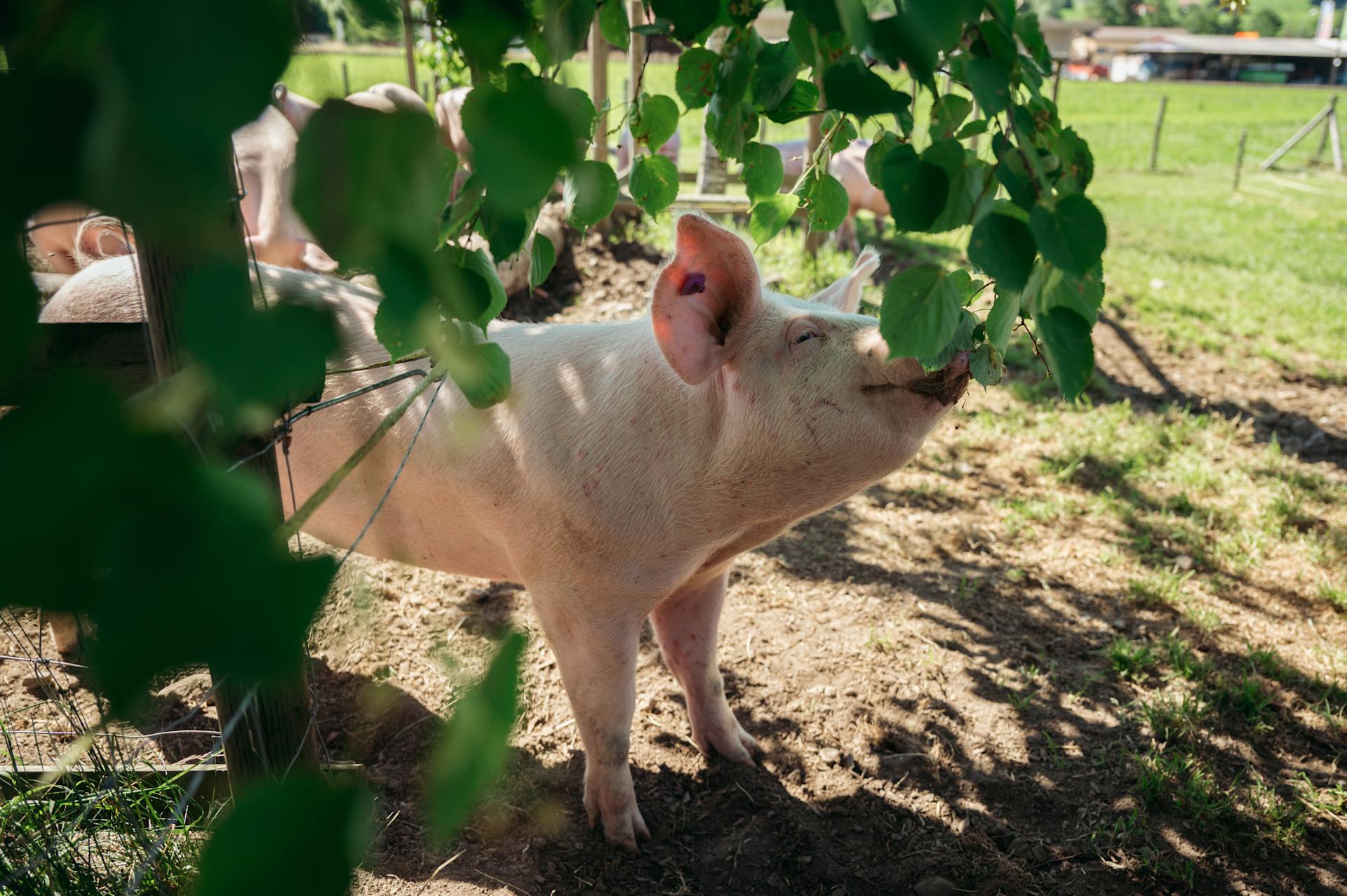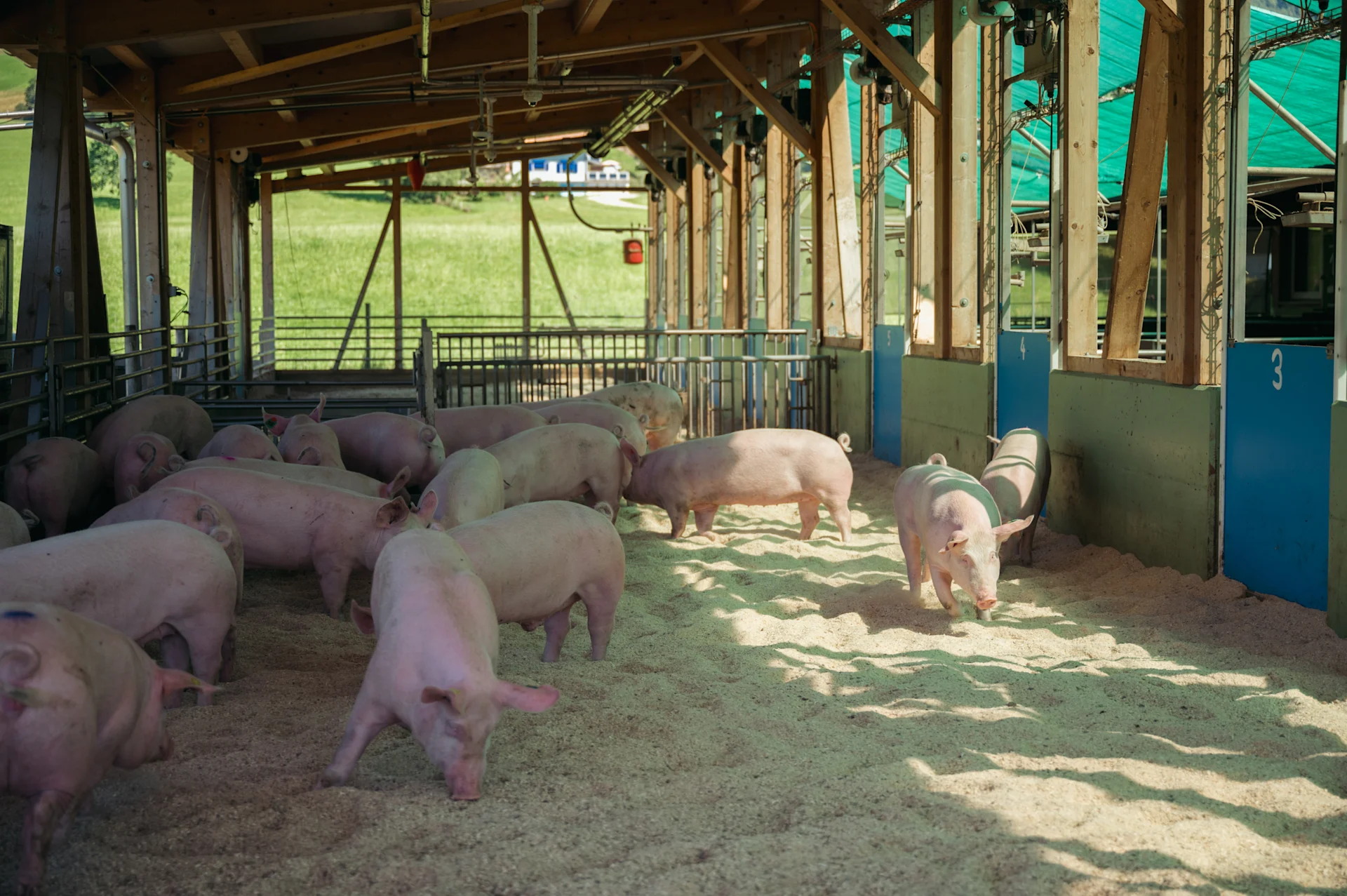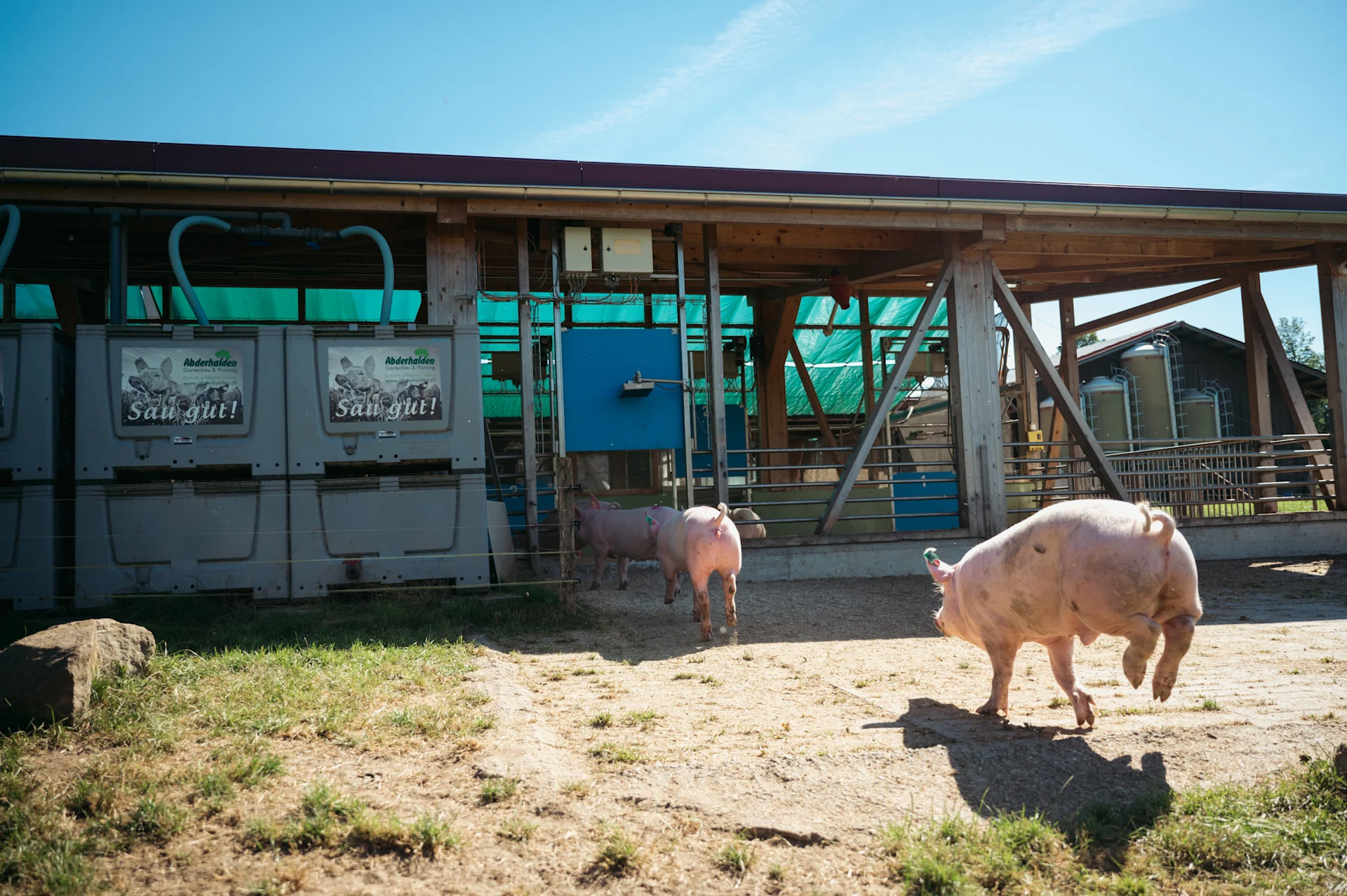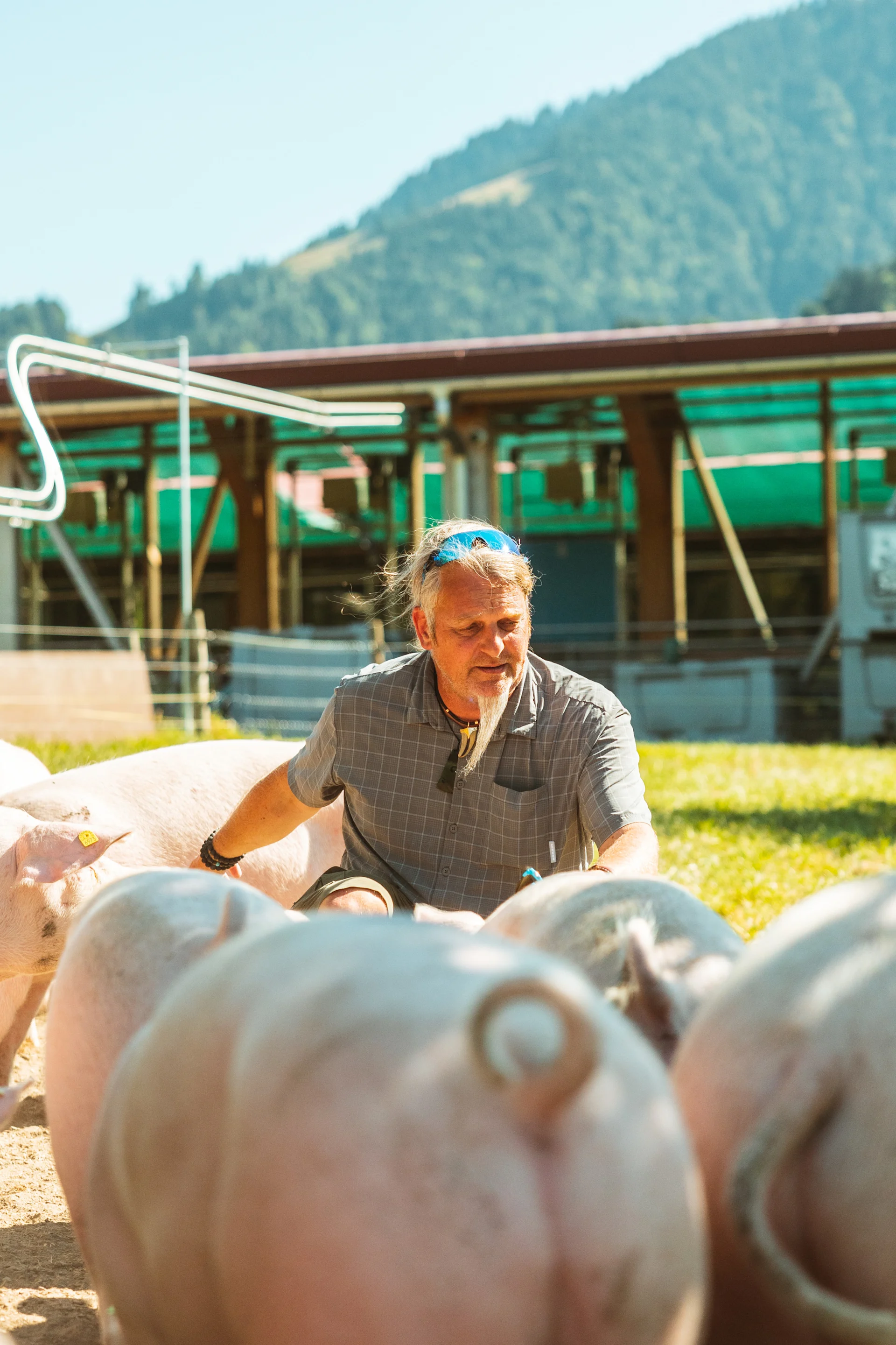
Food waste
Saving food and helping people
A visit to "Tischlein deck dich": members of the FMC Executive Board support the team on site.
navigation

Animal welfare
On a farm in Entlebuch, 350 fattening pigs can let off steam thanks to a pool, playground and meadow. Why we rely on the “meadow pig” concept of the inventor Oliver Hess.
The animals know what is about to occur. They wait patiently, but with visible anticipation. Then everything happens quickly: a gate opens and 35 pigs are let out into the outdoor area. Unlike the barn, here there is room enough to run, which some of the pigs do immediately. Others dig with their snouts in the scattered sawdust. Still others cool off in the pool. Oliver Hess, who developed the luxurious way of keeping farm animals, calls this area the “playground”.
But that’s not all. After 20 minutes, a second gate opens at the Brügghof in Entlebuch, leading from the playground to a meadow with even more space. Some of the animals start to graze, most of them are drawn to the shade under the fruit trees on this hot summer day. Even if it were cloudy, many would seek out this very part of the meadow: after a few minutes, some feed is scattered here through a long tube. With their keen sense of smell, the pigs track down even the last of the delicious corn cubes.

After exactly 25 minutes, a beep sounds; the time on the meadow is over. But how to convince the animals to leave this beautiful place voluntarily? The question seems unwarranted, because the 35 pigs dash back to their barn as if there was something even better. And indeed: “They know there’s food inside now,” Oliver Hess laughs. No pool or green meadow beats a well-stocked feed trough.
Brügghof in Schüpfheim, Lucerne, was the first farm to implement Oliver Hess’ concept of the meadow pig. “Nothing is worse for these intelligent and curious animals than boredom,” he says. But in most existing forms of husbandry, there would simply be nothing for them to do but lie in the barn day in and day out. The 51-year-old has a deal with the pigs: “Pigs for fattening live around 110 days, then we slaughter and eat them. In return, I make sure they are provided a life in a luxury hotel.” However, animal welfare on the farm is not at the expense of nature or profitability.
Hess used to keep pigs himself; nowadays he offers interested farmers his fully automated system equipped with cameras and sensors. It also works thanks to the intelligence of the animals.
For instance, the meadow: under normal circumstances it would have no chance against pigs. Within a few days they would dig up everything with their strong snouts. But the meadow on the Brügghof has been intact for four years because the pigs dig almost exclusively where the corn cubes are scattered. In fact, nothing grows there anymore, but the rest of the meadow remains green. Most of the time it is not even necessary to mow, the omnivorous four-legged creatures will gladly take care of that.

“Migros has always been committed to forward-looking animal husbandry and has a pioneering role in this regard,” says Melanie Chaves, who is responsible for the entire meat range at Migros. “We see potential in the meadow pig concept, as it allows us to offer our customers top-quality pork from animals raised to the highest animal welfare standards.”

Oliver Hess, who came to farming as a career changer, has been exploring meadow pig farming for 14 years. He is always fascinated by what the animals are capable of. Some learn to swim in their short lives, as seen in the playground. “You should see them play football,” he laughs. In keeping with animal welfare, his system allows pigs to express many of their natural instincts and abilities. For a short but beautiful life.
Discover exciting stories about all aspects of Migros, our commitment and the people behind it. We also provide practical advice for everyday life.